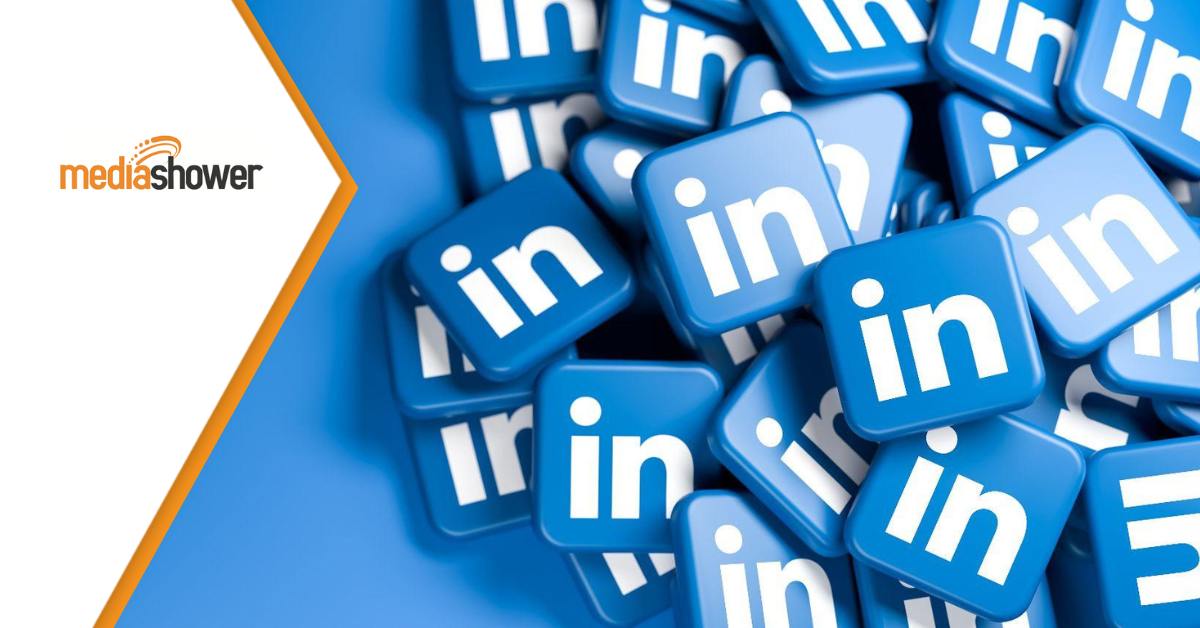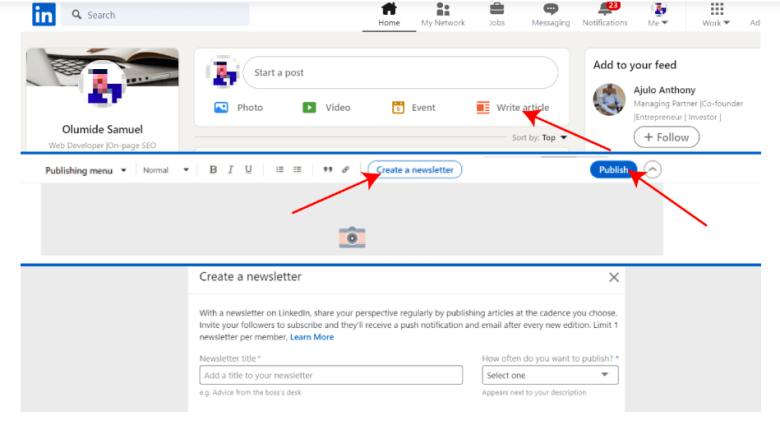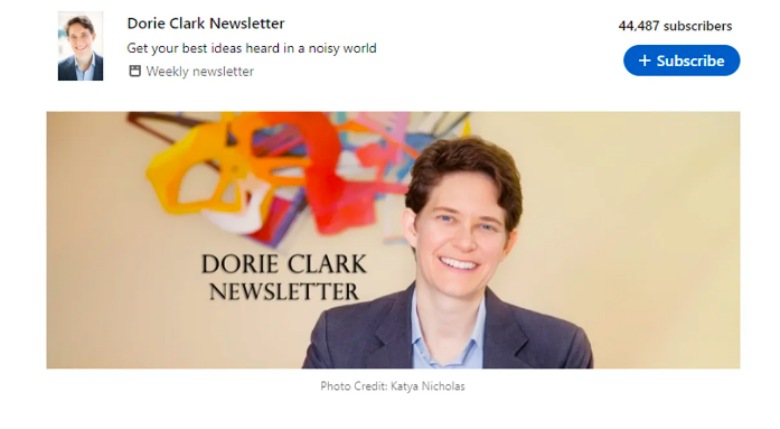
While you’re undoubtedly familiar with LinkedIn posts, LinkedIn newsletters are a different product entirely, offering marketers a powerful new channel for content distribution.
Unlike regular posts that can quickly get lost in the feed, LinkedIn newsletters provide a dedicated space for in-depth, valuable content that lands directly in your subscribers’ LinkedIn notification feeds and inboxes. This free feature allows you to:
- Build a loyal readership within your professional network
- Showcase your expertise consistently
- Reach beyond your immediate connections
For those already sending out newsletters on platforms like MailChimp or HubSpot, adapting your existing content for LinkedIn is easy. This means you can build an entirely new audience for your newsletter with almost zero additional effort.
In the following sections, we’ll share our best practices for using LinkedIn newsletters, from the hundreds of LinkedIn newsletters we’ve created and deployed for our clients.
How Do I Create a LinkedIn Newsletter?
Follow this quick screenshot, or watch the short video below.

LinkedIn Posts vs. LinkedIn Newsletters
- LinkedIn posts: These are simply links or messages you share with your immediate network or followers, your standard social media posts.
- LinkedIn newsletters: This is a separate product within LinkedIn that allows you to create and deploy an original newsletter to anyone that subscribes, distributing each newsletter to their LinkedIn Inbox and feed.
LinkedIn wants you to use their newsletter product. So the company gives you a lot of free promotion to help make your newsletter a success, especially in the all-important premiere issue.
LinkedIn also gives marketers a number of additional tools for newsletters, including metrics to track engagement, which can give you additional insight into what your subscribers find interesting and useful.
While LinkedIn posts are the foundation of your social media strategy, LinkedIn newsletters are a way to expand your audience, as well as leveraging the great content you’re already building for your traditional email newsletter.
How to Create a LinkedIn Newsletter That Gets Read
Whatever goes in your traditional email newsletter can be easily repurposed for LinkedIn, so our usual newsletter best practices apply:
- Your subject line is the single most important piece of your newsletter: it’s the only thing that most people will see, so it needs to be clickworthy. Your best offer, your most interesting story, or your clickbaitiest headline should go first.
- Lead with the story with the broadest interest. Most people don’t care about your latest company award, but they do care about industry trends or a way to do their jobs better. You want a mix of industry and company-specific news.
- Keep it simple: Format-wise, LinkedIn newsletters have limited styling capabilities – so keep your message simple. Think headlines, body text, and images, and not much else. No fancy templates or award-winning designs: it’s all up to the writing.
As with all newsletters, test and learn. Rule of thumb: send out 10 newsletters before you make judgments on what’s working. Then you can start to reflect and optimize.
Your First LinkedIn Newsletter
As we’ve said, LinkedIn really wants you to use their newsletter product. So you can expect your first newsletter to get seen by a lot of people: far more than your typical LinkedIn post.
This promotion scales down over the next few issues, which means you will get the vast majority of your subscribers within the first three issues. Everything after that is incremental.
Don’t let this be a stumbling block for starting your LinkedIn newsletter: you don’t have to get it perfect! You’ll get the promotion either way, and you’ll start testing and learning what works for your new subscribers.
The only way to get started is to get started.
How Often Should I Send My LinkedIn Newsletter?
Our research has found the best schedule is at least once a month, but no more frequently than twice a week. Consistency is key.
How Many LinkedIn Newsletter Subscribers Should I Expect?
Across our clients, we’ve found that LinkedIn newsletters typically attract about 25% of your total LinkedIn followers. So if your business has 10,000 followers, plan on about 2,500 newsletter subscribers. Anything past that is gravy.
Keep in mind that newsletter subscribers and LinkedIn followers are two separate groups. A follower can also be a subscriber, so there may be overlap. But you will also have some subscribers that are not followers.
To be safe, then, we recommend adding subscribers and followers together when reporting your LinkedIn numbers. There may be some double-counting, but it’s close enough.
Case Studies of Successful LinkedIn Newsletters
- #Elevate by Bob Glazer: This newsletter targets entrepreneurs with interesting, timely content on leadership and culture building.
Takeaway and lesson learned: Focus on a specific audience and laser-target them with great content. Defining a niche audience lets you provide highly relevant content that resonates deeply with their specific needs and challenges.

- Innovation Re:Imagined: From global accounting firm Ernst & Young, this publication brings readers engaging news and analysis about cutting-edge technologies.
Takeaway and lesson learned: Stay up-to-date on industry trends, then share your insights with your audience. Leveraging industry expertise positions you as a thought leader.

- Dorie Clark Newsletter: With the tagline “Get your best ideas heard in a noisy world,” this newsletter from consultant author and Columbia University professor Dorie Clark offers excellent business and life success tips.
Takeaway and lesson learned: Give your readers actionable advice that will help them achieve their goals. This will build trust and establish your newsletter as a valuable resource.

Marketer’s Takeaway: LinkedIn newsletters can be a powerful distribution channel for your email marketing. Using our tips will help you develop and deploy a LinkedIn newsletter that lasts.
Media Shower has developed and deployed hundreds of LinkedIn newsletters for B2B businesses like yours. Click here for a free trial of our award-winning marketing platform.